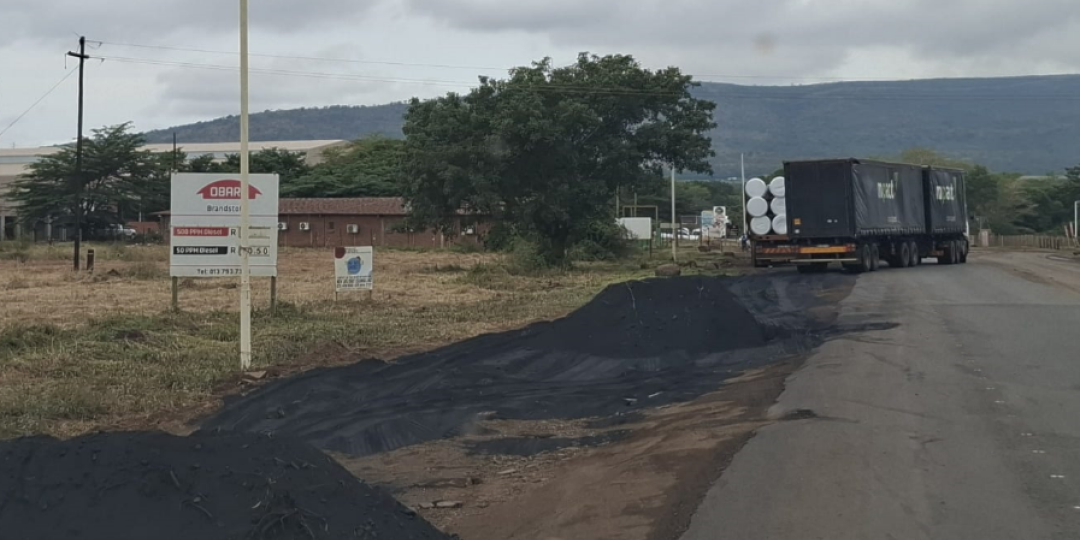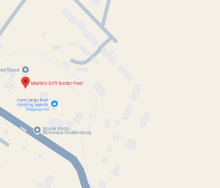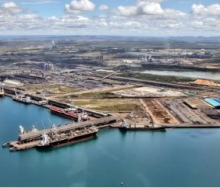Transporters continue to tip coal ash out of their trailers next to the side of the R571 leading from the N4 highway in Komatipoort, potentially threatening the environmentally sensitive fresh-water ecology of the surrounding area.
Cobus Botha, head of the local Nkomazi East agricultural association, has for some time complained about the danger of coal ash leaching into the river a kilometre or less before its confluence with the Crocodile River.
He said, although he had had the Green Scorpions investigating visible evidence of dangerously toxic material being dumped by ore-carrying tipper trucks, brazen pollution close to the Komati River continued with impunity.
Even more so, because it seems to have become standard practice, local authorities seem to think it’s acceptable to use coal ash as fill-in material for ditches and holes next to the R571.
According to Botha, there’s an open area next to the road that is currently being used as a makeshift parking space for trucks at the border town near South Africa’s Lebombo Border Post with Mozambique.
Gravel is often used to cover the coal ash, “but that doesn’t help us,” Botha said.
“What if they decided to work on the road, and they have to dig it all up. Not to mention the threat of coal ash ending up in the river or, lo and behold, becoming airborne and we inhale it.”
He said bulk cargo depots in the vicinity should be taken to task for their responsibility in creating a problem for the community of Komatipoort, situated as it is in an environmentally delicate location south of the Kruger National Park.
“The mines too, I feel, are aware of what’s happening and should be held responsible for the actions of the transporters they contract to move their product.”
Botha said there was no mistaking the potential health hazards of inhaling coal ash, especially considering that coal might undergo acid treatment after caustic leaching to dissolve minerals like sodalite, which produces sulfates and silicic acid.
Coal ash and dust can contain heavy metals such as arsenic, selenium, mercury, chromium, barium and antimony. When these substances leach into freshwater streams, rivers, lakes or groundwater, they can contaminate these water sources.
The leached heavy metals and other pollutants can be highly toxic to aquatic organisms. For example, selenium contamination has been shown to cause long-term harm to fish populations, reducing biodiversity and causing reproductive and developmental problems in aquatic species.
Coal residues can increase the acidity and salinity of freshwater systems, which negatively affects the survival and diversity of aquatic life. Acid mine drainage from coal mining sites is a related problem that severely degrades water quality and kills aquatic organisms.
Toxic metals can accumulate in fish and other aquatic organisms, which can then affect animals and humans higher up the food chain.
Leaching of coal ash toxics into groundwater or surface water used for drinking supplies can expose humans to dangerous levels of toxic elements such as arsenic and chromium.
Exposure to coal ash contaminants through drinking water or inhalation of dust can increase the risk of cancer, respiratory diseases, cardiovascular problems, and systemic inflammation, reports environmental law oganisation, Earth Justice.













